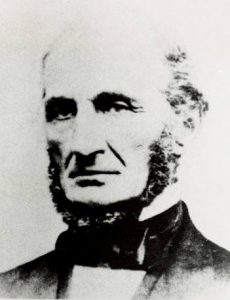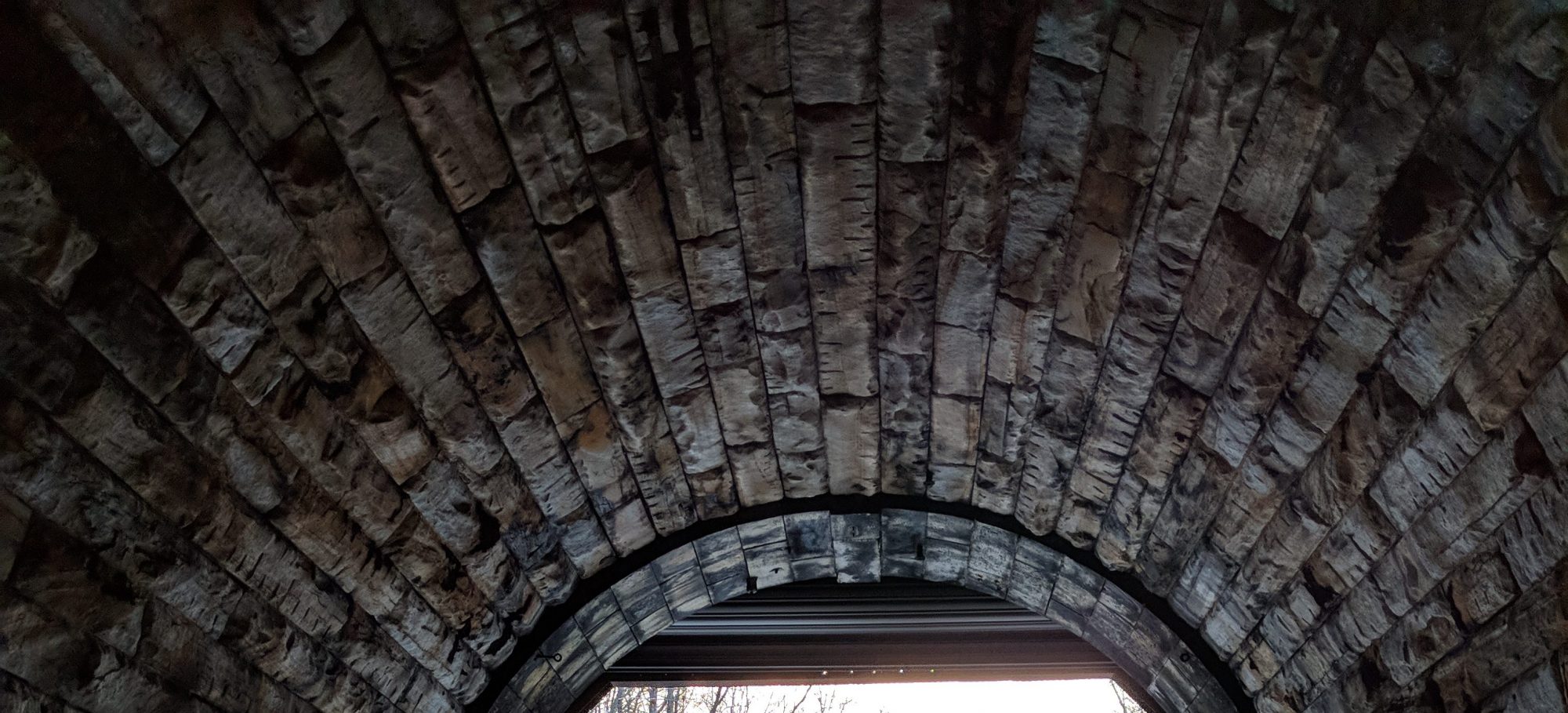The idea for the Hoosac Tunnel was brought up in 1819, however construction did not begin until much later, in 1851. The initial idea for the tunnel was actually an underground canal, and later was changed into a train tunnel.
The decision to make the Hoosac Tunnel, by all accounts, seems to have been an easy one. The area itself is relatively blocked off from the rest of the state of Massachusetts, and in creating this tunnel it would open up the small valley to other parts of the state: connecting to Boston, and Boston connecting to the West. The initial plan was that of making a canal, connecting the Hudson river to the Connecticut river. In the end, this plan was eventually changed to the plan to make the railroad tunnel, with the advancing technology of steam locomotion.
To put everything into perspective, the First Transcontinental Railroad (which linked the East and West sides of the United States with over 1,000 miles of rail) was not started until 1862. The creation of the Hoosac Tunnel, both in idea and completion, truly was a pioneer of the time.
North Adams, Massachusetts sits near the border of Vermont, and there are claims of North Adams being, at one time, nearly part of Vermont. The towns were surveyed in 1749, but instead North Adams and Adams were one, and called East Hoosac (of various spellings, such as Hoosuck). East Hoosac was eventually renamed Adams, and when the town got a bit too large, it was split into North Adams, and Adams.
Over the course of the 20 years that the tunnel was in construction, there were many deaths (some confirmed, and some questionable) as well as many injuries, various accidents, and of course: ghost stories.
The Hoosac Tunnel as it is known today went on a harrowing journey to actually be created, amongst the issues were a lack of support (from the mountain itself and from area locals), funding, millions of gallons of water, and more.
Problems Getting Started
Although the decision to create the Hoosac Tunnel seemed to be an easy one, there was a big problem in gaining support. At the time, the Transcontinental Railroad had not yet begun construction, and overall uncertainty around the idea of a train tunnel kept support from gaining momentum.
Many meetings were held to discuss the plan of the Hoosac Tunnel. This included the idea itself, such as, would it be a canal or a tunnel?
The initial idea of a canal lead many years of research into the idea, including multiple surveys of the area along the Deerfield and Hoosic Rivers. Both rivers lead into larger rivers which lead elsewhere, connecting to other parts of the state and country which would benefit the area. Transportation was much needed in the area, something that was accessible and fast, faster than foot traffic, and faster than a cart pulled by oxen (to name a few).
Many agreed that there needed to be a railroad, and there was! The problem was in the Western Railroad being built in the south of western Massachusetts (in the 1830s), when many needed a route to the north. Support, as well as the existence, of the Western Railroad would prove difficult to getting the ball rolling on the construction of the Hoosac Tunnel. Thus created the idea for a northern railroad – and the Troy and Greenfield Railroad were born!
Many workers of the Western Railroad assumed the Tunnel would compete with workers and others using the Western Railroad. As such, there was a lack of support for those who wanted to support the Troy and Greenfield Railroad, as well as a lack of support for the tunnel idea itself. Much of the further lack of support came from farmers and millworkers, those which felt that the new technology would be a negative influence on the area.
Builders of the railroad around where the Hoosac Tunnel would connect to – such as the Greenfield Railroad, the Troy Railroad, and others – had trouble selling stock as well as had trouble finding contractors who wanted to take up the challenge of building the tunnel. The tunnel builders also had trouble finding those who would buy stock even with the finalized budget of $2 million for the whole tunnel, plus $1.5 million for the land and railroad around it.
There were many attempts to propose a bill which would fund the tunnel, however the bill was constantly defeated. The first occurred 13 May 1851, and the second two years later in May of 1853. The stubbornness of the men who wanted this tunnel to exist would later become the very reason for the tunnel’s existence.
Everyone seemed to know it was a difficult, nearly impossible plan, and yet a man called Alvah Crocker refused to accept it.
Alvah Crocker
Alvah Crocker was a vatman, born in 1801 to Sarah and Deacon Samuel Crocker. Alvah’s father was a vatman as well as his father before him. Paper used to be made one sheet at a time by someone called a vatman, who would lift pulp out of warm water in a vat – this caused these vatman to have red hands as a result. The pulp would dye the skin and as such, Alvah and his father, grandfather, and so on, all had red hands.
Crocker spent most of his time on the road between Western Massachusetts and Boston to the East. He often sold his paper in Boston, and as most of his time was spent on a slow moving cart pulled by oxen, he often thought of ways to fix his problems. Of course, his mind went to a consistent form of transportation, which would cut down his time away from home and his family.
Alvah Crocker spent his life advocating for, and trying to bring the Hoosac Tunnel to light. This included convincing many farmers and other millworkers that the tunnel and railroad would be a positive addition to the area. He spent much of his time and effort speaking with representatives of many towns between Western Massachusetts and Boston, to convince them that the tunnel would be helpful.
As such, he is and should further be known as the Father of the Hoosac Tunnel, as the tunnel itself was a direct cause of his advocacy.

When you’re finished here, why not go on through the history of the Hoosac Tunnel, more in depth, with The East Portal>>
